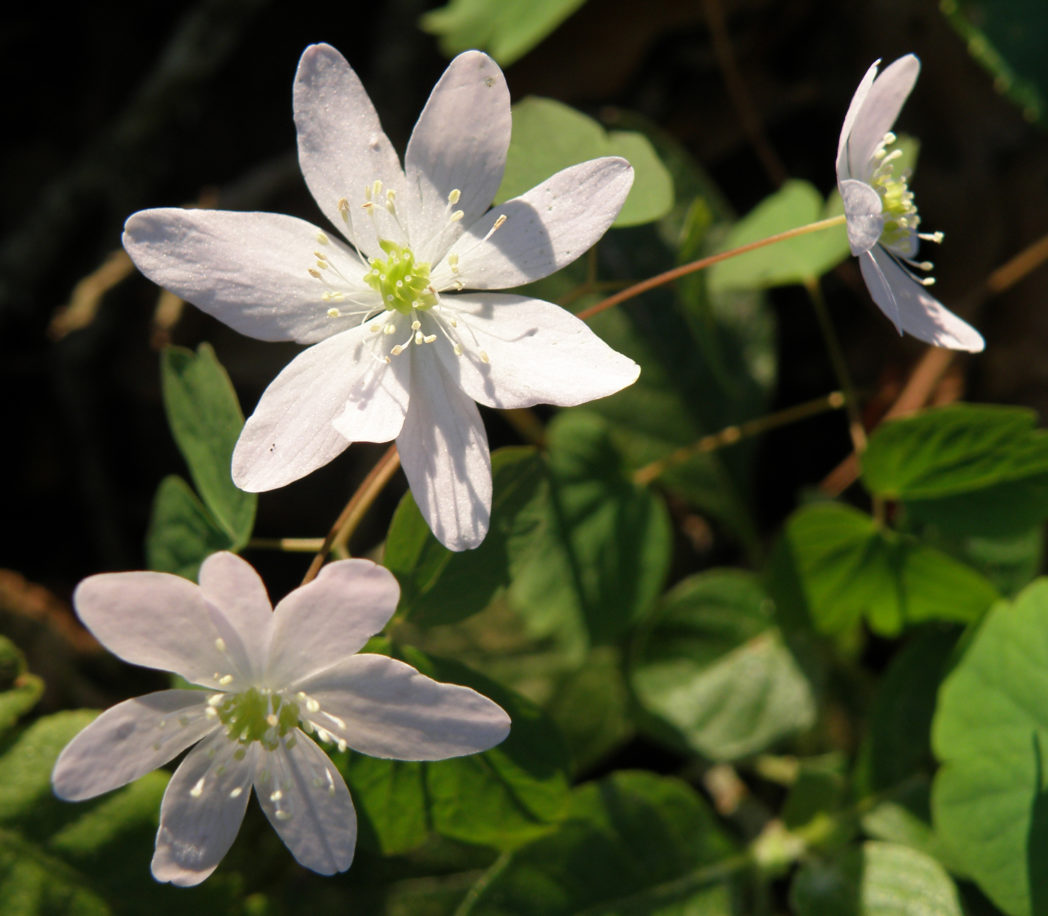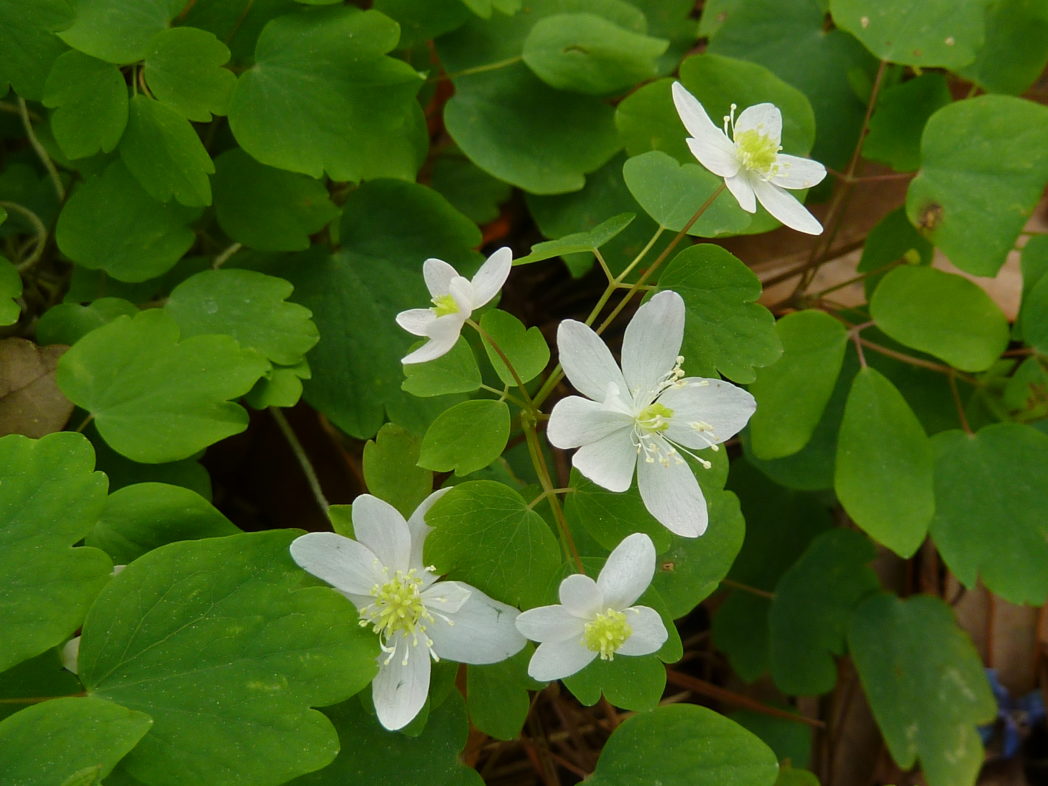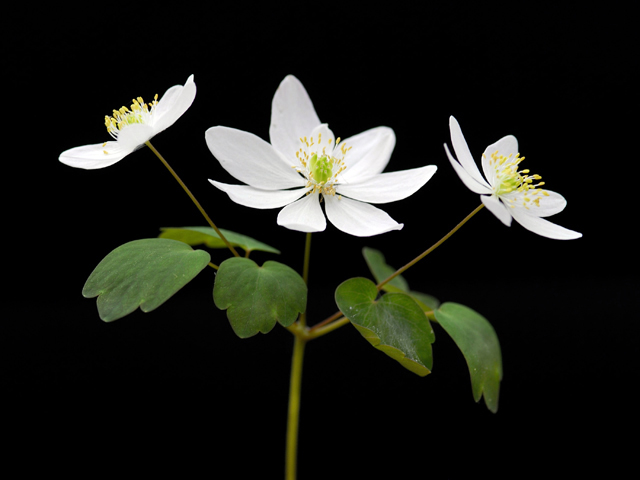Rue anemone
Pictured above: Rue anemone (Thalictrum thalictroides) by Stacey Matrazzo. Click on terms for botanical definitions. View post as a PDF.
Rue anemone is a rare, ephemeral, perennial herb. Its dainty white flowers have many stamens with white filaments and yellow anthers. The flowers are born solitary or in loose umbels on delicately slender stalks that rise above the foliage. Basal and stem leaves are glabrous and compound, comprised of three leaflets, each with three bluntly rounded lobes. They are arranged in whorls.
Rue anemone emerges and blooms in early spring and is gone by mid-summer. It occurs naturally in slope forests and limestone bluffs. In Florida, it is a state-listed endangered species because it is at its most southern range. It is much more prolific throughout the eastern United States.
The tuberous, starchy roots of rue anemone can be eaten once they have been cooked. Native Americans made a tea from the roots to treat diarrhea and vomiting.
Family: Ranunculaceae (Buttercup or crowfoot family)
Native range: Gadsden, Leon and Liberty counties
To see where natural populations of rue anemone have been vouchered, visit www.florida.plantatlas.usf.edu.
Soil: Moist (but not inundated) organic soil
Exposure: Filtered sunlight
Growth habit: 6+”
Propagation: Seed
Garden tips: Rue anemone can be incorporated into a home landscape within its range, however, it does best in a pot where its conditions can be controlled.
Rue anemone plants are occasionally available from nurseries that specialize in native plants. To find a nursery, visit plantrealflorida.org.



